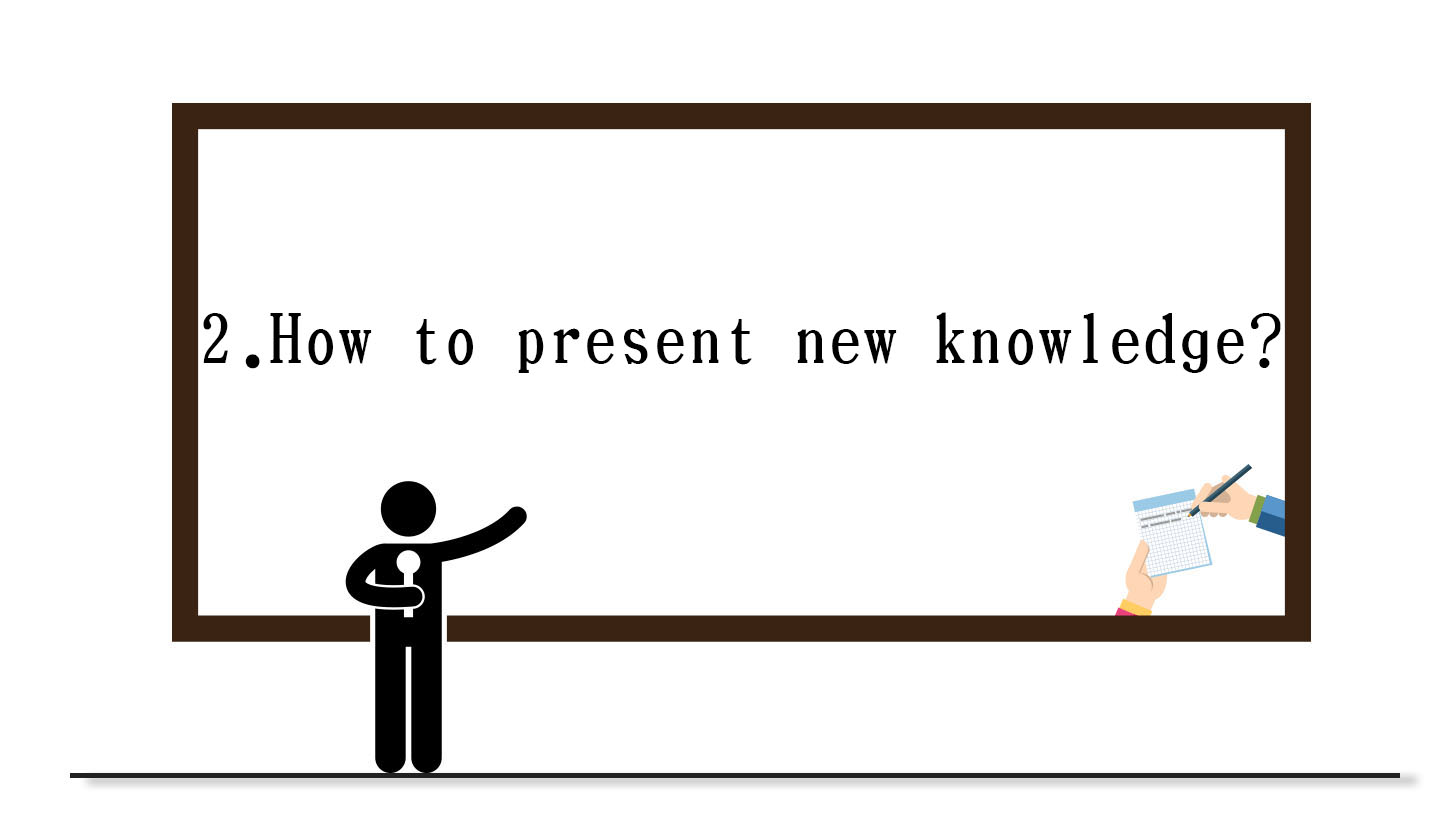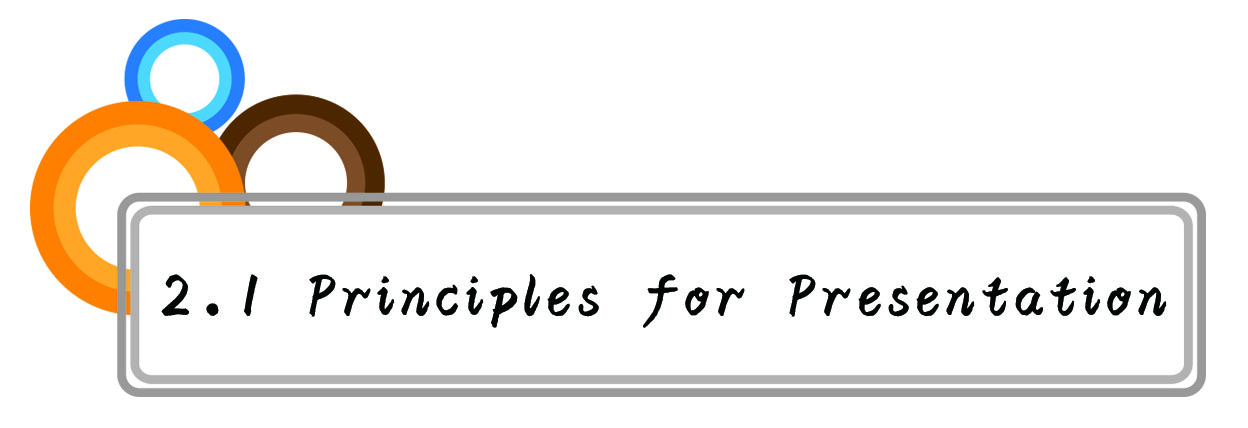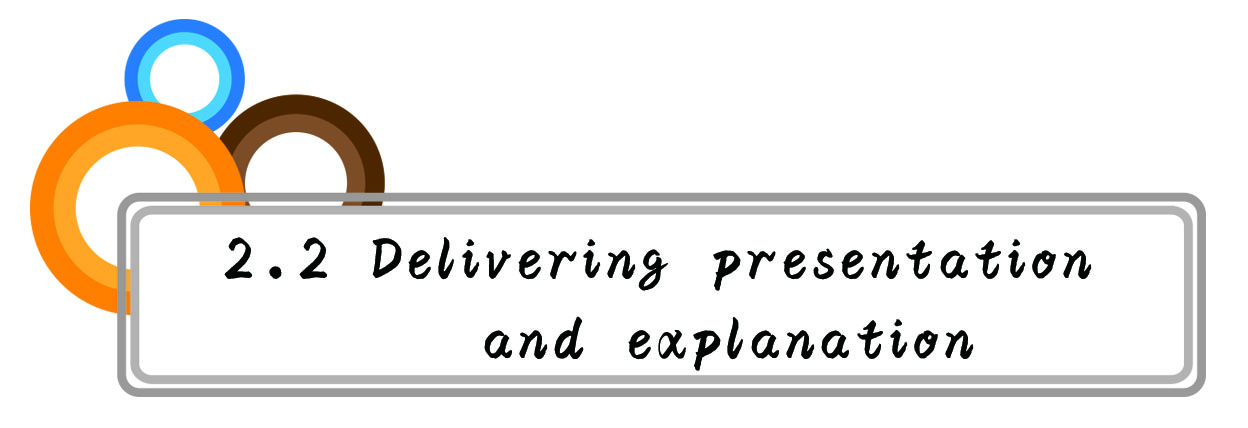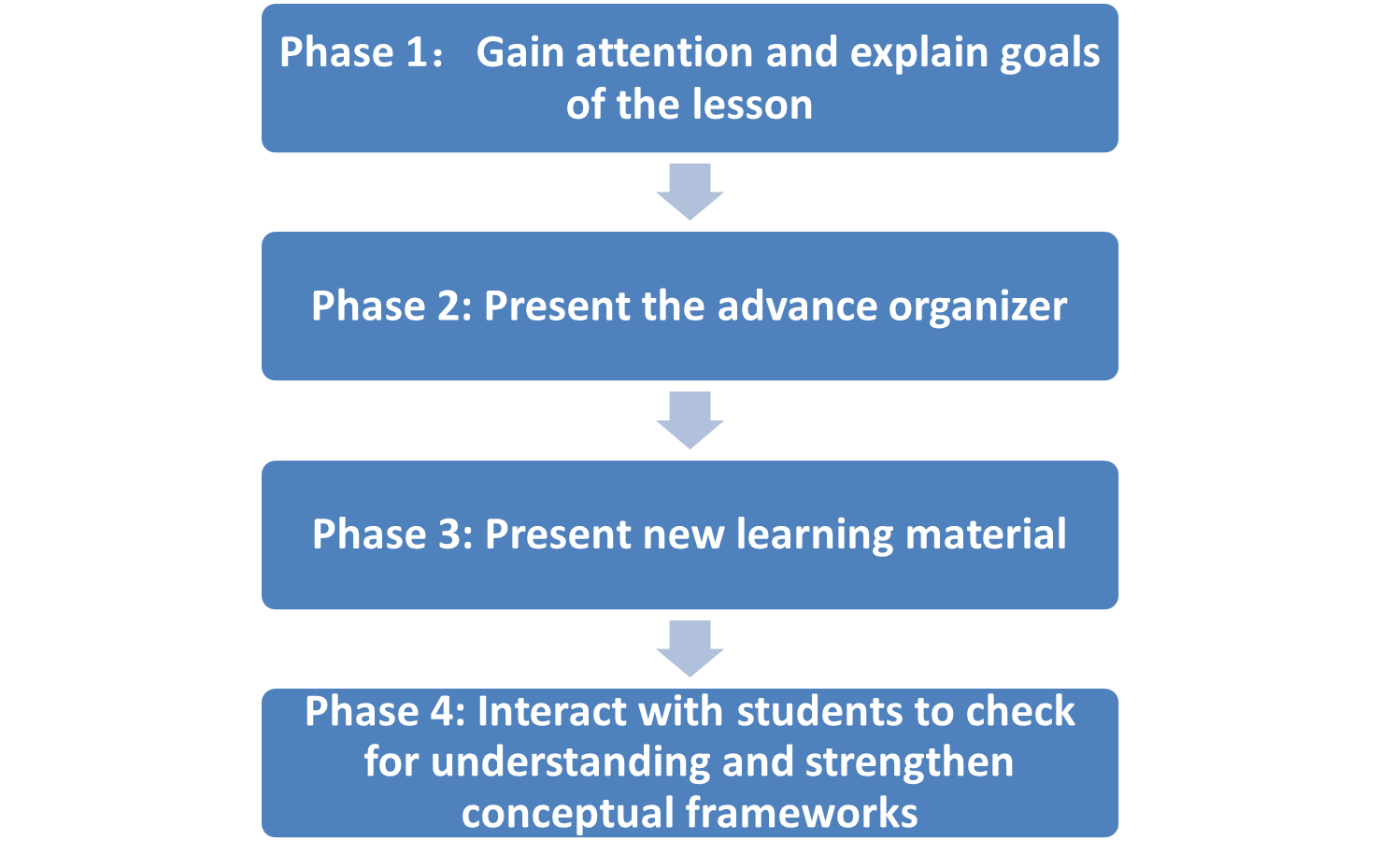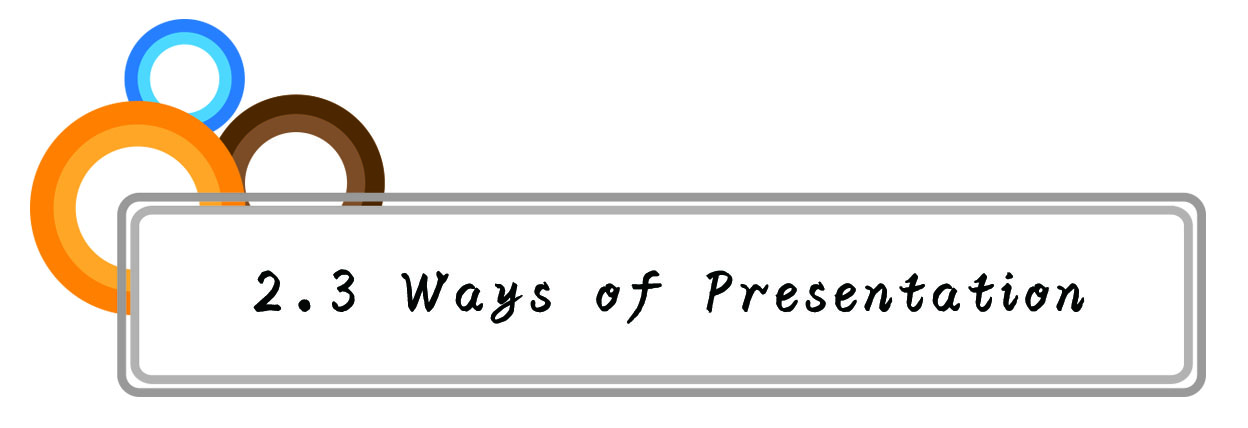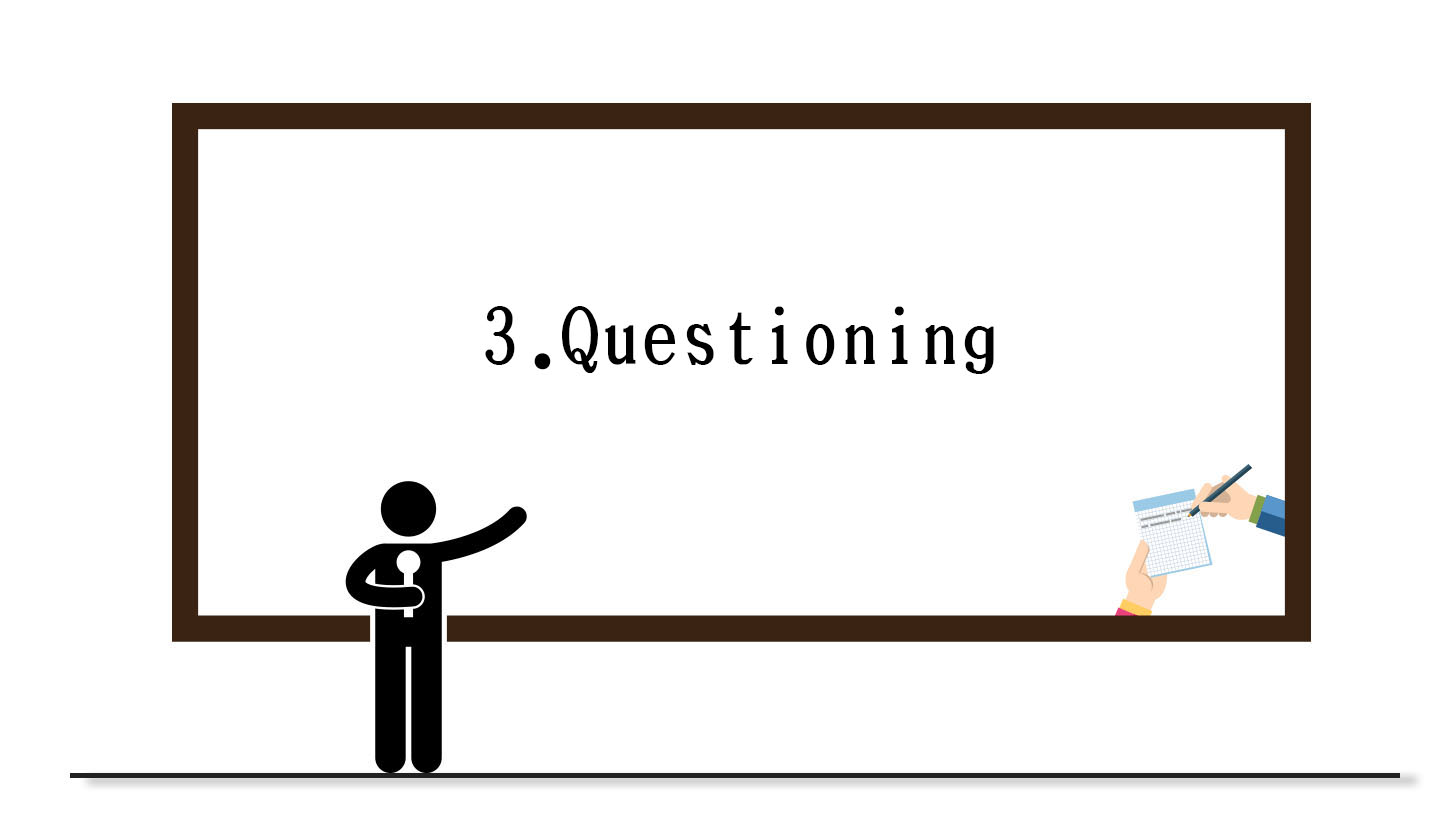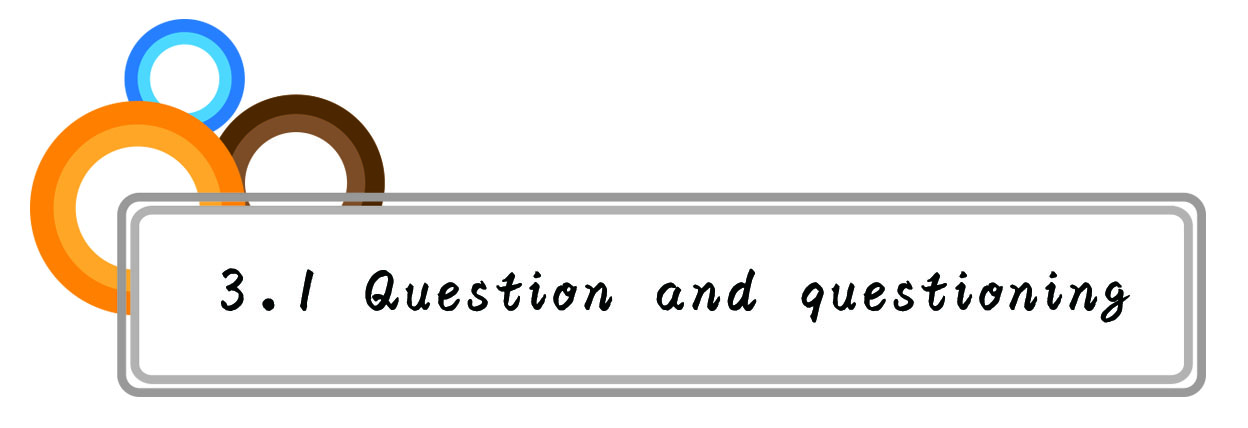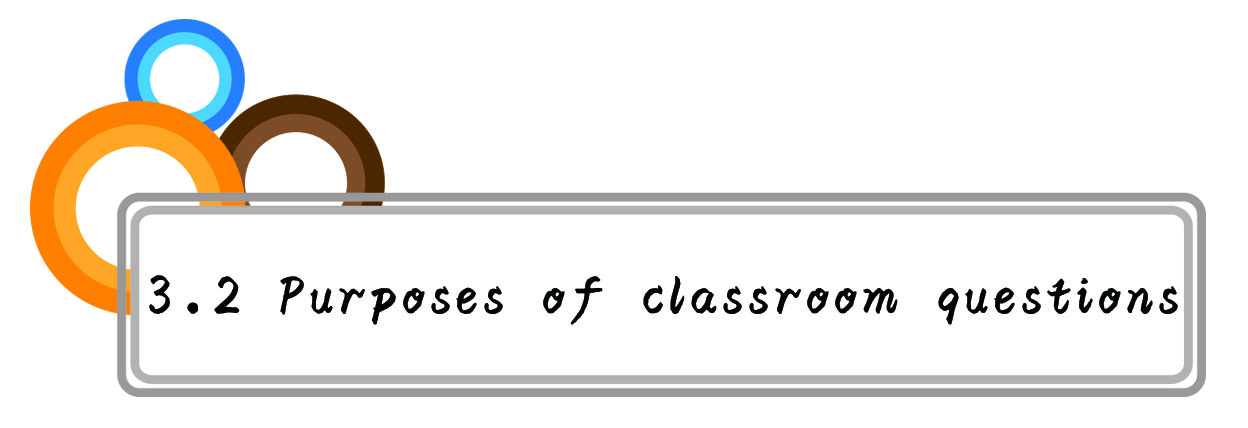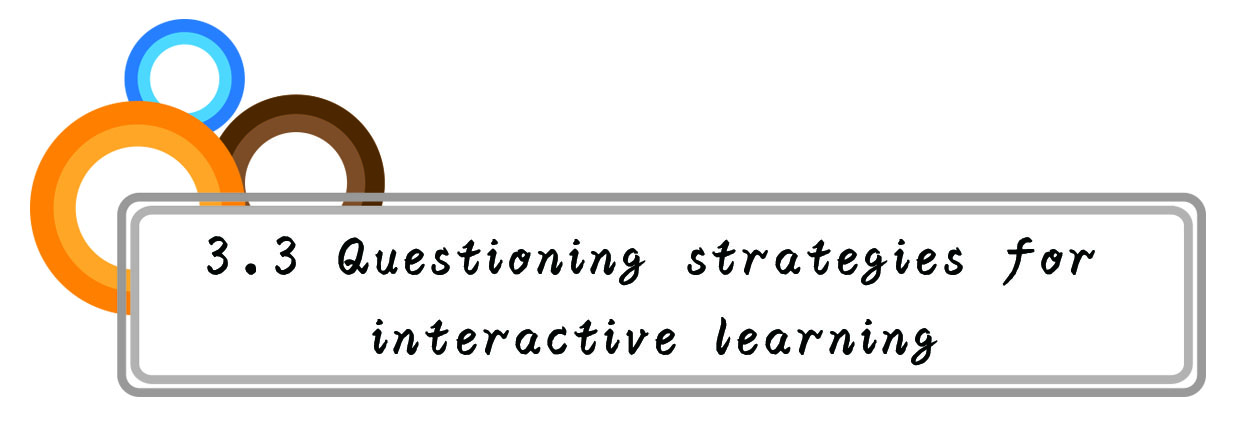-
1 Why to ...
-
2 How to ...
-
3 Questioning
-
4 Resource
-
5 Questions
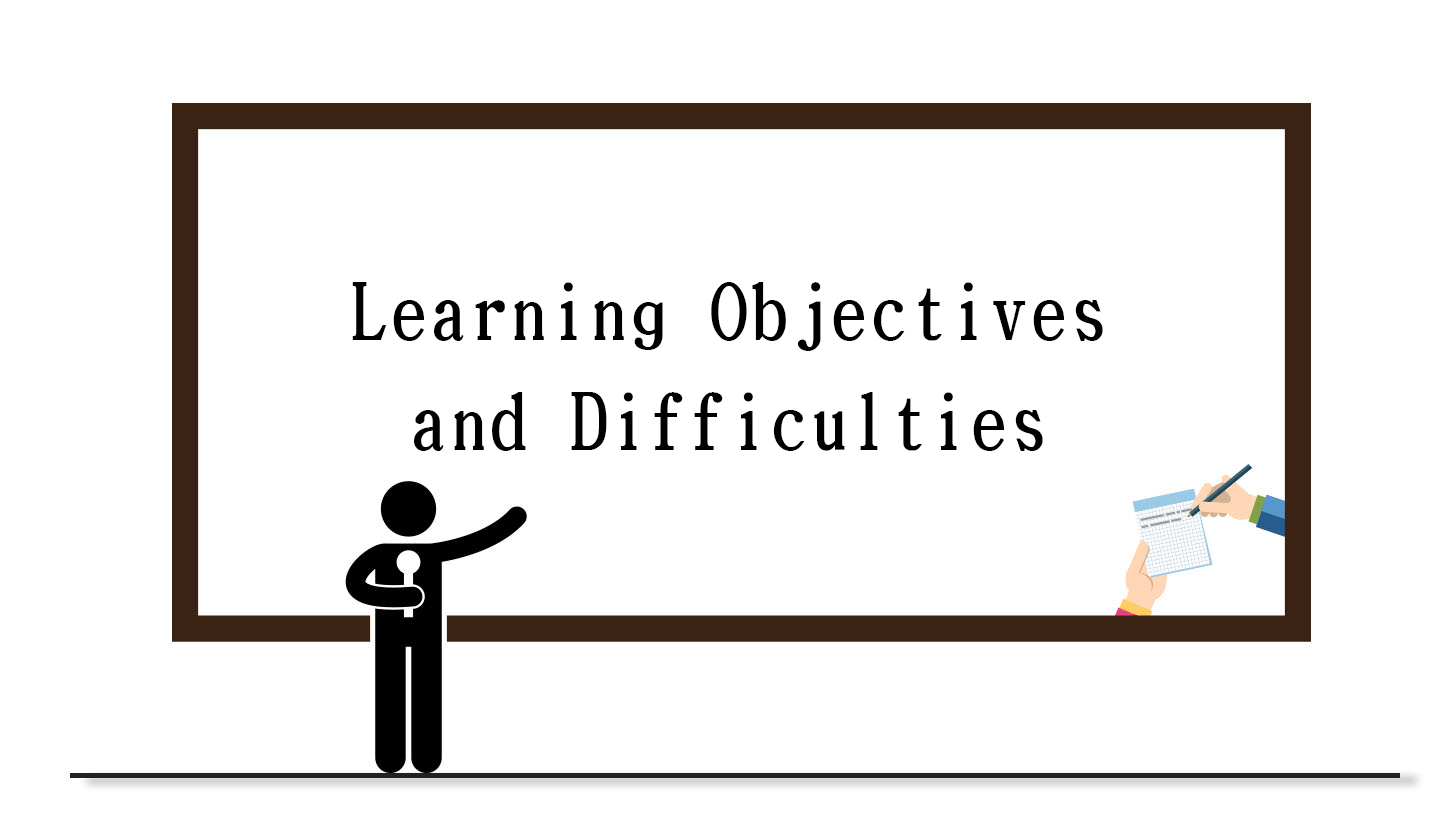
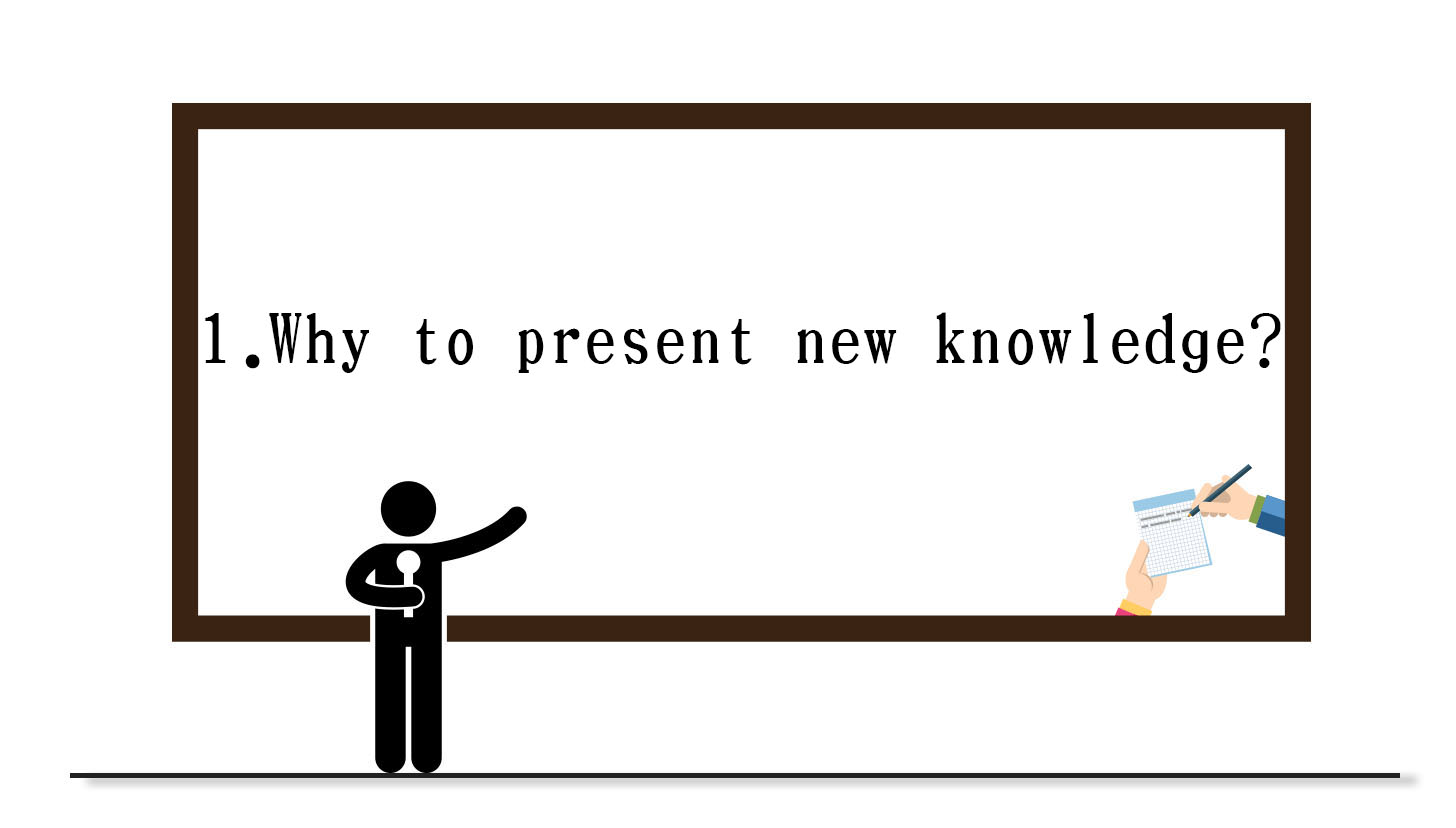
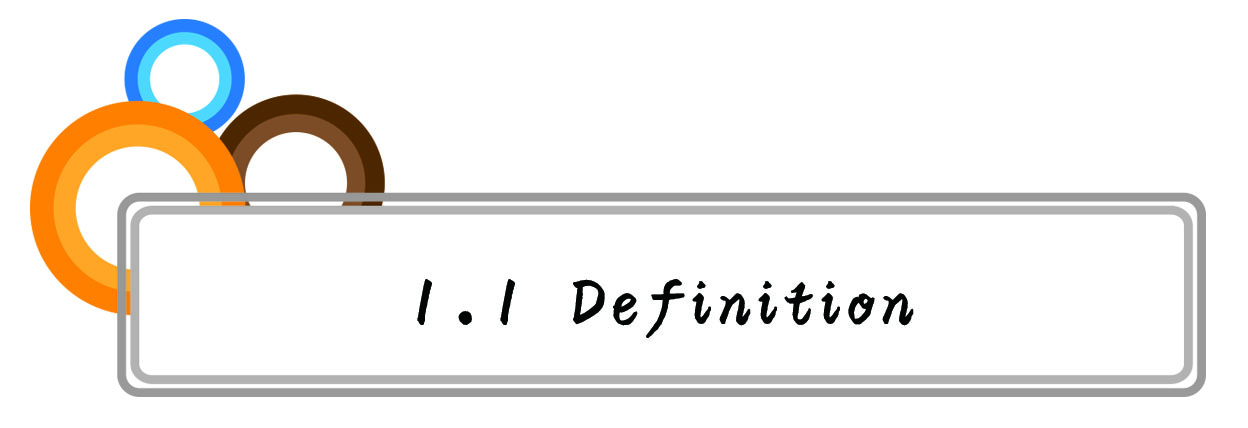
One of the teacher’s jobs is to mediate such new material so that it appears in a form that is most accessible for initial learning. This kind of mediation may be called ‘presentation’.
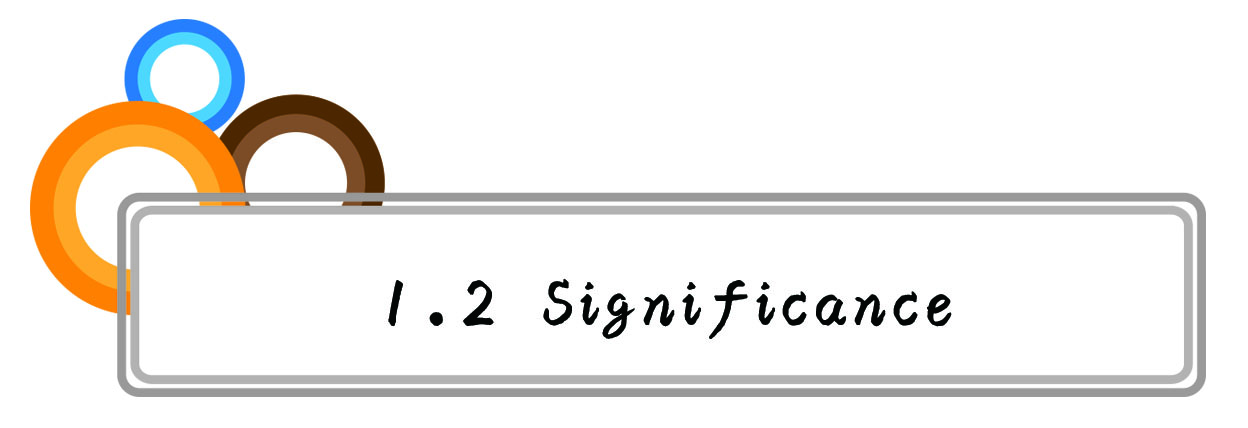
(1) Raw, unmediated new input is often incomprehensible to learners; it does not function as ‘intake’, and therefore does not result in learning. Hence the necessity for presenting it in such a way that it can be perceived and understood.
(2) Effective teacher presentations of mew material in formal courses can help to activate and harness learners’ attention, effort, intelligence and conscious (metacognitive) learning strategies in order to enhance learning.
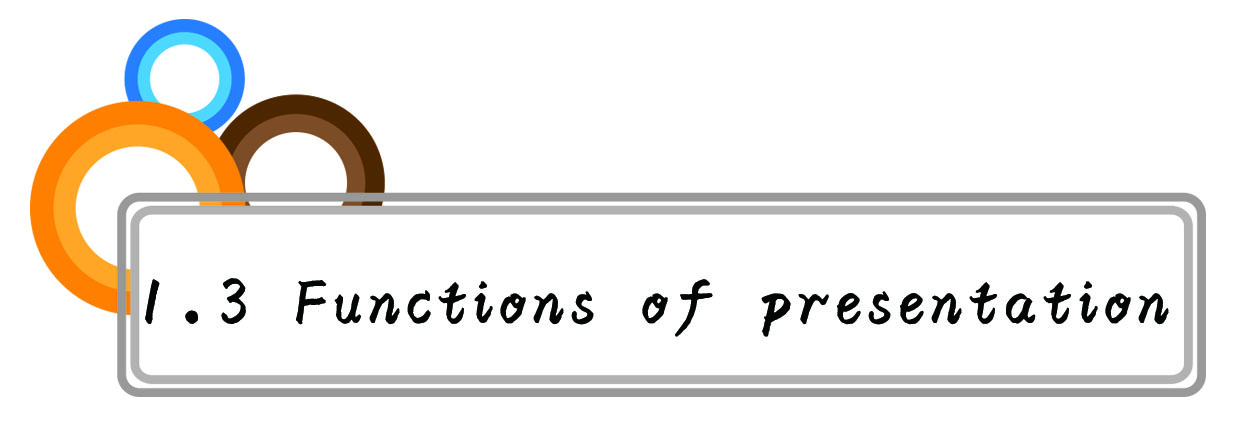
(1) It may help Ss focus them on the teacher and the material to be learnt;
(2) The learners can perceive (see or hear) the target material;
(3) Through T’s explanation, illustration, Ss can understand the meaning of material being introduced;
(4) If the presentation is effective, Ss can easily remember the material they learned and have opportunity to consolidate learning.

